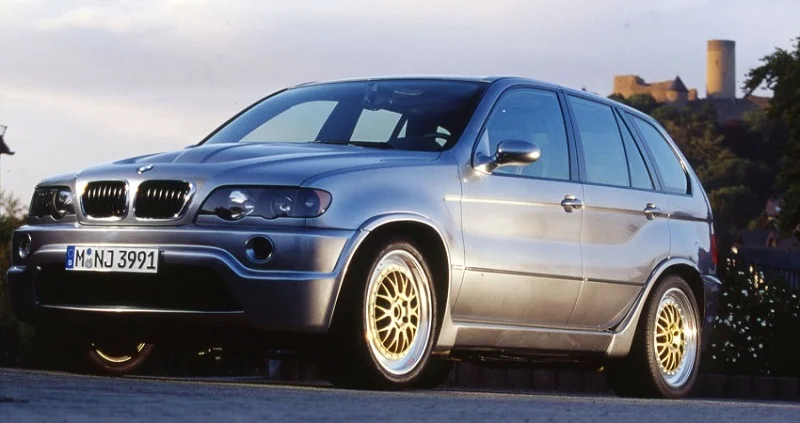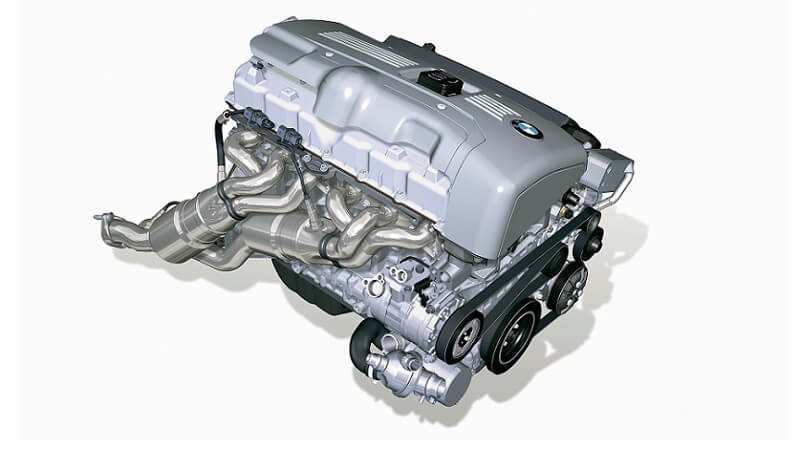Many exciting things happened in the automotive space at the turn of the millennium. Formula One returned to the Indianapolis Motor Speedway in the United States after nine years; BMW had just released the E53 X5 and the Z8. There were also numerous radical, experimental machines that came to life during this period. However, the one that tops that list is very likely the BMW X5 Le Mans.
The German manufacturer is known for pushing boundaries with some of its vehicles, but this was the first time anyone had taken a proper, niche racing engine and put it straight into under the hood of its first SUV, or SAV as BMW likes to call the X series..

BMW X5 Le Mans Origins
A couple of years before the X5 Le Mans made its debut, BMW decided to return to the 24 Hours of Le Mans. BMW Motorsport partnered with the Williams F1 team to create the BMW V12 LM, an open cockpit racer that required no road-going regulations. This was just around when McLaren began to decline (also resulting in the end of its eventful partnership with BMW).
As a result, BMW turned towards one of its long-time racing teams, Schnitzer Motorsport. Schnitzer agreed to race the V12 LM in Le Mans. Unfortunately, the team’s return to the famed race was far from memorable. They’ve detected vibrations in the drivetrain and were forced to retire both cars to prevent catastrophic failure.
A year later, in 1999, BMW made significant updates to the V12 LM, and the resulting car was the V12 LMR. It retained the 6.0-liter V12 from the V12 LM; called the S70/3, this engine was the successor to the S70/2 — the engine that powered the iconic McLaren F1.
Unlike its predecessor, the V12 LMR was a complete success. It went on to win the 24 Hours of Le Mans that year. The year 1999 was also when BMW introduced the E53 X5 — the German manufacturer’s first SUV. However, the mad lads at BMW wanted to emphasize the success of their new Sport Activity Vehicle even further. The idea was to show BMW fans that the X5, although different and conformist in some ways, was a proper Bimmer nonetheless. The best way to do so was to take the S70/3 engine from the Le Mans car and mount it onto the X5. This marks the birth of the one-off BMW X5 Le Mans — an automotive oddity that simply worked.
King of the Ring
In the V12 LMR, the 6.0-liter V12 engine was restricted to 580 hp — BMW used air intake limiters, so the car could comply with regulations. However, BMW had to make no such compromises with the X5 Le Mans. Finally breathing free, the engine inthe X5 LM produced a jaw-dropping 700 hp and 532 lb-ft of torque. This propelled the massive SUV to 62 mph in just 4.7 seconds.
Obviously, just putting this behemoth of an engine into the BMW X5 and showcasing it at the 2000 Geneva Motor Show wasn’t enough for the Bavarian carmaker. So they turned to the racing driver, Hans-Joachim Stuck, with the intent of setting a record at the Nürburgring. On one fine day in June 2001, the German lapped the 12.9-mile, 73-turn Nordschleife in 7m49s — in a sport activity vehicle. For some context, that’s a quicker lap time than the 2014 Aston Martin V12 Vantage S and 2009 Porsche 911 Carrera S (997.2).

This record for an SUV stood for nearly two decades until the Audi RS Q8 piloted by Frank Stippler broke it in 2019 with a 7m42s lap.
It’s also worth mentioning that the X5 Le Mans’ official top speed was revealed to be 173 mph, but Stuck reached 191 mph during his run. Even though something like a 2022 BMW X3 is a far cry from this type of performance, the X5 Le Mans played a major role in the growth and success of the X series.
Dressed for the job
Considering the insane amounts of power and torque the engine produced, BMW had to change the rest of the car. The hood on the X5 LM features a giant air intake scoop, for starters. BMW also fitted new skirts and dropped the stiffer suspension by 30 mm to improve aerodynamics. However, this was still a massive vehicle, and it showed; the handful of people who have driven it had reported that you can’t ignore its size, and that it doesn’t behave anything like an SUV while cornering.
BMW had also equipped the LM with 20-inch racing wheels and a set of bucket seats — the rear two were removed for the Nürburgring record attempt. Unsurprisingly, they also removed the audio system and added a gauge cluster in its place on the center console.

BMW never released details about the vehicle’s weight, but it did mention that it was split 51:49 front/rear.
BMW X5 Le Mans: Ahead of Its Time
Unsurprisingly, the X5 Le Mans never made it to production; BMW never intended for it to — the car didn’t even feature airbags. Building a vehicle powered by a costly race engine that will probably last only a few thousand miles is rather unnecessary.
However, it did draw a lot of attention to the brand and their newest product — the standard, road-going X5. It also set the path for the super SUVs that we see today. Before the Lamborghini Urus or the Audi RS Q8, there was the BMW X5 Le Mans.
It would take BMW nearly another decade before they revisited the idea of a performance SUV. In 2009, the manufacturer released the first X5M based on the newer E70 X5 platform. Every BMW M SUV that followed has been one heck of a car, but it’s unlikely that any will ever do it as well as the X5 LM.





